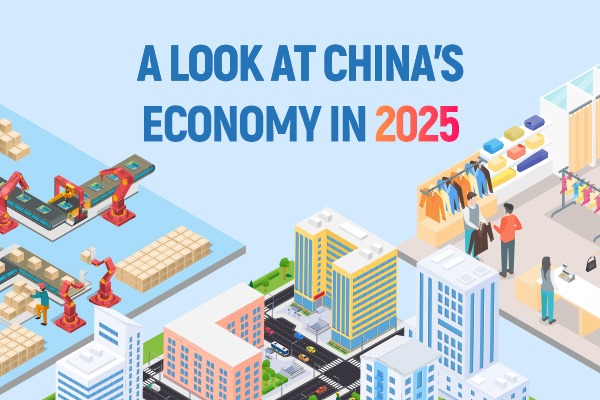Action plan to make central SOEs flexible


Mixed-ownership reform planned in more firms and industries, says SASAC
China will look to achieve sustained and rapid growth of the majority of its centrally administrated State-owned enterprises in the second half of this year, according to the country's top State asset regulator.
As economic activities gradually normalize in China, the government will guide both central and locally-administered SOEs to build an industrial supply chain based on mixed-ownership reform to jointly create a favorable industrial and economic ecosystem, said Hao Peng, chairman of the State-owned Assets Supervision and Administration Commission of the State Council.
The upcoming three-year action plan for State-owned enterprises (2020-22) will make SOEs' operations more flexible and better structured to generate fresh momentum, he said on Monday.
Even though the uncertainties, including the COVID-19 pandemic and weak demand for goods in international markets, have affected the global economy, SOEs, the backbone of China's economy, have registered a quick recovery and made great strides in the ongoing reform, unleashing dynamic momentum for high-quality development.
The latest official data showed that revenue of central SOEs climbed by 0.6 percent on a yearly basis to 2.9 trillion yuan ($414.9 billion) in June, while net profit rose to 166.48 billion yuan, up by 5 percent, recovering from an economic downturn.
Hao said that the central SOEs will expand domestic demand, and actively seize opportunities of major regional development strategies and big-ticket investment projects across the country in the second half, while further lowering operational costs, cutting noncore businesses, and checking up on inefficient and invalid assets.
Conducting cross-industry research activities and making more technology breakthroughs in areas the nation is heavily dependent on imports, and enhancing the stability and competitiveness of the industrial and supply chains will be priorities for central SOEs in the second half, said Hao, adding the SASAC will accelerate the layout of new industries, such as 5G and "new infrastructure", to further expand the growth space for SOEs.
According to the SASAC, mixed-ownership reform will be launched in more SOEs with more industries involved, while State-owned capital will be encouraged to invest in the private sector, in a bid to push forward comprehensive reform in these enterprises.
China's Nasdaq-style sci-tech innovation board, known as the STAR Market, has also provided new opportunities for SOEs in terms of financing channels as well as improvement in management and incentive mechanisms. With the promotion and support from the SASAC, many central SOEs have been listed on the STAR Market.
The SOEs function like a catalyst as the country speeds up reform of the capital market. In the first half of 2020, SOEs listed on the Shenzhen Stock Exchange completed 10 restructuring cases totaling more than 217.49 billion yuan, and 12 refinancing cases worth 22.32 billion yuan, government data showed.
Central SOEs have not only played a vital role in assisting in China's battle against COVID-19 earlier this year but also actively participated in other activities such as stabilizing jobs and exports, supporting "new infrastructure" projects and taking part in poverty alleviation and flood control in the first half, said Li Jin, chief researcher at the China Enterprise Research Institute in Beijing.
Fixed-asset investment by China's central SOEs surged 7.2 percent on a yearly basis to about 1 trillion yuan in the first half, despite the adverse impact of COVID-19. The growth was 5.9 percentage points higher than in the first five months of the year, and 11.7 percentage points more than that of the first quarter, according to the SASAC.
Sun Ziyu, vice-president of Beijing-headquartered China Communications Construction Co Ltd, said the No 1 container terminal project of the Chuanshan port of the Ningbo-Zhoushan Port in eastern China's Zhejiang province, passed inspection late last month. Together with the No 2 to No 11 terminals, it makes the Chuanshan port the world's second-largest single container port by cargo handling capacity. The project, built by a number of CCCC subsidiaries, will relive the shortage of berths in the Yangtze River Delta region, he said.




































